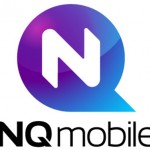By Andrew Hay, Chief Evangelist, CloudPassage
 Andrew Hay is the Chief Evangelist at CloudPassage, Inc. where he is lead advocate for its SaaS server security product portfolio. Prior to joining CloudPassage, Andrew was a a Senior Security Analyst for 451 Research, where he provided technology vendors, private equity firms, venture capitalists and end users with strategic advisory services.
Andrew Hay is the Chief Evangelist at CloudPassage, Inc. where he is lead advocate for its SaaS server security product portfolio. Prior to joining CloudPassage, Andrew was a a Senior Security Analyst for 451 Research, where he provided technology vendors, private equity firms, venture capitalists and end users with strategic advisory services.
Anyone who’s done it will tell you that implementing controls that will pass a PCI audit is challenging enough in a traditional data center where everything is under your complete control. Cloud-based application and server hosting makes this even more complex. Cloud teams often hit a wall when it’s time to select and deploy PCI security controls for cloud server environments. Quite simply, the approaches we’ve come to rely on just don’t work in highly dynamic, less-controlled cloud environments. Things were much easier when all computing resources were behind the firewall with layers of network-deployed security controls between critical internal resources and the bad guys on the outside.
Addressing the challenges of PCI DSS in cloud environments isn’t an insurmountable challenge. Luckily, there are ways to address some of these key challenges when operating a PCI-DSS in-scope server in a cloud environment. The first step towards embracing cloud computing, however, is admitting (or in some cases learning) that your existing tools might be not capable of getting the job done.
Traditional security strategies were created at a time when cloud infrastructures did not exist and the use of public, multi-tenant infrastructure was data communications via the Internet. Multi-tenant (and even some single-tenant) cloud hosting environments introduce many nuances, such as dynamic IP addressing of servers, cloud bursting, rapid deployment and equally rapid server decommissioning, that the vast majority of security tools cannot handle.
First Takeaway: The tools that you have relied upon for addressing PCI related concerns might not be built to handle the nuances of cloud environments.
The technical nature of cloud-hosting environments makes them more difficult to secure. A technique sometimes called “cloud-bursting” can be used to increase available compute power extremely rapidly by cloning virtual servers, typically within seconds to minutes. That’s certainly not enough time for manual security configuration or review.
Second Takeaway: Ensure that your chosen tools can be built into your cloud instance images to ensure security is part of the provisioning process.
While highly beneficial, high-speed scalability also means high-speed growth of vulnerabilities and attackable surface area. Using poorly secured images for cloud-bursting or failing to automate security in the stack means a growing threat of server compromise and nasty compliance problems during audits.
Third Takeaway: Vulnerabilities should be addressed prior to bursting or cloning your cloud servers and changes should be closely monitored to limit the expansion of your attackable surface area.
Traditional firewall technologies present another challenge in cloud environments. Network address assignment is far more dynamic in clouds, especially in public clouds. There is rarely a guarantee that your server will spin up with the same IP address every time. Current host-based firewalls can usually handle changes of this nature but what about firewall policies defined with specific source and destination IP addresses? How will you accurately keep track of cloud server assets or administer network access controls when IP addresses can change to an arbitrary address within a massive IP address space?
Fourth Takeaway: Ensure that your chosen tools can handle the dynamic nature of cloud environments without disrupting operations or administrative access.
The auditing and assessment of deployed servers is an addressable challenge presented by cloud architectures. Deploying tools purpose-built for dynamic public, private and hybrid cloud environments will also ensure that your security scales alongside your cloud server deployments. Also, if you think of cloud servers as semi-static entities deployed on a dynamic architecture, you will be better prepared to help educate internal stakeholders, partners and assessors on the aforementioned cloud nuances – and how your organization has implemented safeguards to ensure adherence to PCI-DSS.









 NetQin Mobile Inc., a global provider of mobile security, privacy and productivity applications, has changed its name to NQ Mobile Inc.
NetQin Mobile Inc., a global provider of mobile security, privacy and productivity applications, has changed its name to NQ Mobile Inc.